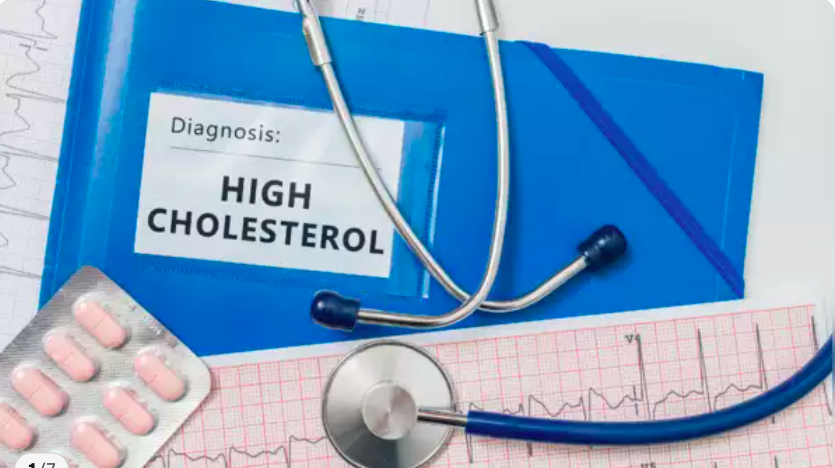Health
What Is The Prevention Of Memory Loss In Adults?
Last Updated on September 1, 2022 by Nurse Vicky
What Is The Prevention Of Memory Loss In Adults?
Social interaction is crucial for preventing stress and depression, both of which can lead to memory loss.
In addition, sleep plays a huge role in overall health, and most adults need seven to nine hours of sleep each night.
This allows the brain to process the information from the day and form memories. It also triggers a “cleaning system” in the brain, which eliminates waste.
Getting enough sleep is a powerful way to prevent memory loss and other brain disorders.
Exercise
Exercise can promote brain health and slow cognitive decline. It also counteracts age-related inflammation, which affects brain function and is implicated in many chronic diseases, including heart disease and cancer.
Still, more research is needed to determine if physical activity can improve memory and slow cognitive decline in older adults.
Even if this is not proven scientifically, regular physical activity provides benefits for both the brain and the body.
Researchers have found that aerobic exercise is effective in improving the functioning of the brain.
The results of an analysis of 29 clinical trials found that aerobic exercise improved attention, memory, and processing speed.
In addition, it improved the participants’ mood and sleep. Aerobic exercise may also activate beneficial genes in the brain.
Exercise is beneficial for all ages, including older adults, and it also reduces the risk of heart disease and diabetes.
Healthy diet

A healthy diet can prevent cognitive decline and reduce the risk of dementia. Consuming a balanced diet full of vegetables, fruits, and whole grains is essential for brain health.
It should also include protein from plant sources and fish. You should also choose healthy fats rather than saturated fats. Green leafy vegetables are especially brain-boosting.
They are packed with omega-3 fatty acids, folate, and vitamin K, and have been linked to decreased risk of dementia and cognitive decline.
Eating a low-fat, high-fiber diet has been linked to a reduced risk of heart disease and type 2 diabetes.
Research shows that this type of diet can also improve the cardiovascular system and lower blood pressure and cholesterol levels.
Low-fat diets are also associated with reduced risks of stroke and other cardiovascular diseases.
A low-fat diet also improves memory and thinking skills. Consuming a Mediterranean-style diet has many health benefits.
Connecting with others

Engaging in social activities is a great way to help keep the brain active. They also make us feel less alone and help us feel better about our lives.
Engaging in meaningful activities also boosts our mood and gives us a sense of purpose.
So, if you or your loved one is experiencing cognitive impairment, try connecting with others.
There are many ways to connect with other adults and find a group that will be a good fit.
Wearing a helmet

A large number of studies have confirmed that wearing a helmet can protect against head injury.
While the findings are not conclusive, they indicate that helmet use can protect against brain injury.
One study found that adults who wear helmets are less likely to suffer severe head injuries.
Other studies found that helmets prevent brain injuries and lead to reduced mortality.
Wearing a helmet also improves overall health.
Head injuries can be a significant cause of death and disability in the elderly. Falls and tripping are common causes of brain injuries.
According to a recent report from the Centers for Disease Control and Prevention (CDC), the number of deaths related to falls increased by 17 percent from 2008 to 2017, with the largest increase occurring in those over 75 years old.
The report also noted that the use of a helmet reduced the risk of traumatic brain injury.
Different types of helmets are designed to protect against different types of head injuries. For instance, a bike helmet is designed differently than a batting helmet or a skateboard helmet.
social interaction
The benefits of social interaction for older adults have been well-documented. Studies show that engaging in meaningful interactions with friends, family, and others helps keep the brain healthy.
Despite the cognitive decline that many older adults experience, social interactions appear to be essential for brain health.
A National Institutes of Health study shows that as little as ten minutes of social interaction a day can boost cognitive performance and provide a valuable edge as we age.
Another study reveals a relationship between loneliness and dementia. It found that older adults who were more likely to be socially isolated had a greater risk of developing the disease.
This effect was independent of depression and vascular disease, which are known risk factors for dementia.
Although the study did not find a direct link between loneliness and dementia, it has triggered researchers to look further into the issue. It is possible that social interaction could be the key to preventing dementia.
FAQ
What does a healthy brain need?
What is the best way to prevent memory loss?
- Include physical activity in your daily routine. Physical activity increases blood flow to your whole body, including your brain.
- Stay mentally active.
- Socialize regularly.
- Get organized.
- Sleep well.
- Eat a healthy diet.
- Manage chronic conditions Properly and on time.
What foods helps with Memory loss?
Answer
Leafy greens like kale, spinach, collards, and broccoli are full of nutrients that are good for the brain, including vitamin K, lutein, folate, and beta carotene. According to research, consuming more of these plant-based foods may decrease cognitive decline.
What three meals help prevent memory loss?
Answer
Three of the finest foods to prevent memory loss include berries, seafood, and leafy green vegetables. There is a ton of evidence that they promote and safeguard brain health
Does depression harm the brain?
Answer
In addition to making a person feel down and hopeless, depression can permanently harm the brain, making it harder for the sufferer to focus and recall things.
Conclusion
Tell us anything you know about The Prevention Of Memory Loss In Adults
Remember your health is wealth
Please, let us know your thoughts in the comments section.
Health
6 Daily Habits to Naturally Lower Cholesterol Levels
Health
Understanding the Rapid Spread of Monkeypox’s New Strain Clade 1b

Understanding the Rapid Spread of Monkeypox’s New Strain Clade 1b: Key Facts on Transmission, Symptoms, Severity, and Vaccination
Monkeypox, a viral disease with symptoms resembling smallpox, has recently gained attention due to the emergence of a newstrain, Clade 1b.
This article delves into the essential details about this new variant, including how it spreads, its symptoms, its severity, and the current state of vaccinations.
Our goal is to provide a comprehensive and clear understanding of this evolving situation, enabling readers to stay informed and prepared.
Monkeypox, once a rare and somewhat obscure disease, has recently become a significant public health concern due to the emergence of new strains.
Among these, Clade 1b has been noted for its rapid spread and distinct characteristics.
As we navigate through the complexities of this variant, it is crucial to grasp the fundamentals of its transmission, symptoms, severity, and preventive measures, including vaccination.
Understanding Monkeypox Clade 1b
What is Monkeypox?
Monkeypox is a zoonotic virus belonging to the Orthopoxvirus genus, which also includes smallpox.
First identified in monkeys, it can infect humans through close contact with infected animals or individuals.
While it shares similarities with smallpox, monkeypox tends to be less severe and less transmissible.
Clade 1b Overview
Monkeypox has several clades (strains), with Clade 1b being the most recent and notable for its rapid spread.
This strain has shown increased transmissibility compared to previous clades, raising concerns among public health officials.
Transmission of Clade 1b
Modes of Transmission
Clade 1b spreads primarily through:
- Direct Contact: Contact with bodily fluids, skin lesions, or contaminated surfaces of an infected person.
- Respiratory Droplets: Prolonged face-to-face interaction can lead to transmission through respiratory droplets.
- Animal Contact: Infected animals, particularly rodents and primates, can transmit the virus to humans.
Environmental Factors
Transmission rates can also be influenced by environmental factors such as:
- Crowded Living Conditions: Higher transmission rates are observed in densely populated areas.
- Sanitation Practices: Poor hygiene and sanitation can facilitate the spread of the virus.
Symptoms of Monkeypox Clade 1b
Early Symptoms
The symptoms of Clade 1b may resemble those of other viral infections, making initial diagnosis challenging.
Early symptoms include:
- Fever: A sudden onset of high temperature.
- Headache: Severe headaches that can persist for days.
- Muscle Aches: Generalized muscle pain and discomfort.
- Fatigue: Extreme tiredness and weakness.
Rash and Skin Lesions
A defining feature of monkeypox is the rash, which typically progresses through several stages:
- Macules: Flat, discolored spots on the skin.
- Papules: Raised bumps.
- Vesicles: Fluid-filled blisters.
- Pustules: Pus-filled lesions that eventually crust over.
Severe Symptoms
In more severe cases, symptoms may include:
- Encephalitis: Inflammation of the brain, leading to neurological symptoms.
- Pneumonia: Infection of the lungs that can cause difficulty breathing.
- Secondary Infections: Bacterial infections that may complicate the healing process.
Severity of Clade 1b
General Outlook
Clade 1b has been associated with a higher transmission rate and more severe outcomes compared to other strains. However, the overall severity can vary widely among individuals.
Factors influencing severity include:
- Immune System Status: Individuals with weakened immune systems or pre-existing conditions may experience more severe symptoms.
- Age: Young children and elderly individuals are at higher risk of severe illness.
- Timeliness of Medical Care: Early medical intervention can significantly affect the outcome.
Mortality Rates
The mortality rate for Clade 1b is currently under study, but initial data suggest it may be higher than previous strains. Prompt medical attention and supportive care are crucial in reducing the risk of severe outcomes.
Vaccination and Prevention
Current Vaccines
Vaccination is a key strategy in controlling the spread of monkeypox.
The following vaccines are relevant:
- Smallpox Vaccine: The smallpox vaccine is effective against monkeypox due to the similarities between the viruses. It provides protection for those who have been recently vaccinated or who received it in the past.
- Monkeypox-Specific Vaccine: Research is ongoing into vaccines specifically targeting monkeypox, with several candidates showing promise in trials.
Vaccination Recommendations
Public health authorities recommend vaccination for:
- Healthcare Workers: Individuals who are at higher risk due to their profession.
- High-Risk Populations: People in areas experiencing outbreaks or those with frequent exposure to infected individuals.
Preventive Measures
In addition to vaccination, preventive measures include:
- Good Hygiene: Regular handwashing and use of hand sanitizers.
- Avoiding Contact: Minimizing close contact with individuals displaying symptoms or with infected animals.
- Isolation: Infected individuals should isolate themselves to prevent the spread of the virus.
Conclusion
The emergence of Monkeypox Clade 1b represents a significant challenge to global health. Its increased transmissibility and potential for severe outcomes highlight the importance of staying informed and proactive.
By understanding its transmission, symptoms, and preventive measures, individuals and communities can better protect themselves and mitigate the impact of this new strain.
FAQs
1. What makes Clade 1b different from other monkeypox strains?
Clade 1b is noted for its increased transmissibility and potentially more severe outcomes compared to other strains.
It spreads faster and may lead to more serious health issues, necessitating closer monitoring and enhanced preventive measures.
2. How can I tell if I have monkeypox or another viral infection?
Monkeypox often begins with flu-like symptoms and progresses to a distinct rash.
If you experience these symptoms, especially if you’ve been in contact with someone who has monkeypox or are in an outbreak area, seek medical advice for accurate diagnosis and testing.
3. Is the smallpox vaccine effective against Monkeypox Clade 1b?
Yes, the smallpox vaccine offers protection against monkeypox, including Clade 1b, due to the similarities between the two viruses.
However, its effectiveness may vary based on factors such as time since vaccination and individual health conditions.
4. Are there any new vaccines specifically for monkeypox?
Research is ongoing to develop and approve vaccines specifically targeting monkeypox.
Several candidates are in various stages of clinical trials, with some showing promising results in enhancing protection against monkeypox strains, including Clade 1b.
5. What should I do if I suspect I have monkeypox?
If you suspect you have monkeypox, contact a healthcare provider immediately. They can guide you through testing, diagnosis, and appropriate care.
In the meantime, practice good hygiene and avoid close contact with others to prevent spreading the virus.
References:
Health
Understanding the Low Risk of Mpox Outbreak in India and Our Preparedness Measures

-

 Trending Stories1 year ago
Trending Stories1 year agoCDC: 1 in 4 Americans Still COVID-Free by End of 2022
-

 Health5 years ago
Health5 years agoMeghan Trainor Shares Motivational New Song ‘Blink’
-

 Health2 years ago
Health2 years agoHow Long Does Monkey Pox Last Before It Surfaces in the Body?
-

 Health2 years ago
Health2 years agoWhat Causes Swollen Body? Understanding Edema and its Triggers
-

 Health4 months ago
Health4 months agoHow Do Pawpaw Seeds Support Cardiovascular Health?
-

 Health3 years ago
Health3 years agoNutrition and the Importance of a Fitness Program – 3 Things to Know
-

 Health3 years ago
Health3 years ago5 Weird Reasons Why Pimples Disappear After Marriage
-

 Health2 years ago
Health2 years agoHealth Benefits Of Pawpaw Seed? 7 Things To Know








